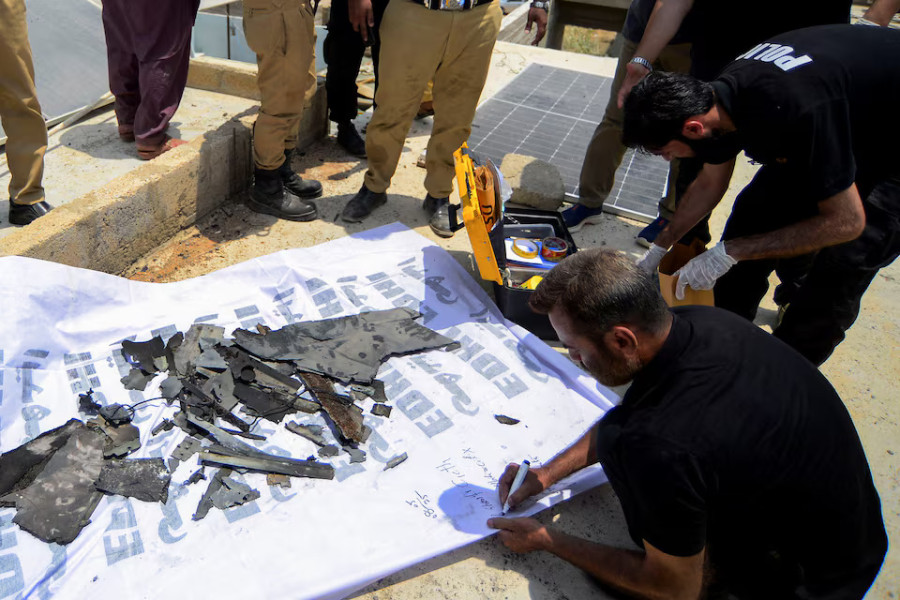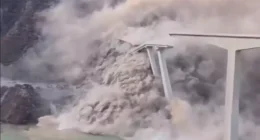Background of the India-Pakistan Conflict
Historical Context of the Dispute
The rivalry between India and Pakistan, particularly over the disputed region of Kashmir, has long been a source of tension. On May 8, 2025, this conflict escalated with the use of drones and missiles, marking a new phase in their military engagements. The current crisis follows a series of events, including a deadly Indian missile strike on Pakistan on May 7, 2025, which killed at least 31 people, according to Pakistani officials. This strike, described by Pakistan’s Prime Minister Shehbaz Sharif as an “act of war,” set the stage for the recent drone and missile exchanges.
Triggering Events in 2025
The escalation began after an attack on April 22, 2025, when gunmen killed 25 tourists and a local in Indian-administered Kashmir, prompting India to launch retaliatory missile strikes. These strikes, the most extensive on Pakistan outside their four wars, intensified the conflict. Both nations have since accused each other of initiating drone and missile attacks, with each claiming defensive actions against the other’s aggression.
India’s Military Response
Interception of Pakistani Drones and Missiles
India’s Defense Ministry reported that on the night of May 7 into May 8, 2025, its forces successfully intercepted and neutralized multiple drones and missiles launched by Pakistan. These attacks targeted military stations in Jammu and Kashmir and Punjab, with locals in Amritsar reporting explosions and bright flashes. The Indian army stated that no casualties occurred and claimed to have destroyed a Pakistani air defense system in Lahore, demonstrating a robust response to perceived Pakistani aggression.
Strategic Objectives of India’s Actions
India’s military actions were framed as a necessary defense against Pakistan’s attempts to escalate the conflict. The Defense Ministry emphasized that its response was proportionate, targeting Pakistani air defense radars and systems to neutralize future threats. This approach reflects India’s strategy to maintain control over contested regions while countering Pakistan’s military capabilities.
Pakistan’s Counter-Accusations
Allegations of Indian Drone Attacks
Pakistan has accused India of launching at least 25 drones into its territory on May 7, 2025, resulting in significant civilian and military losses. According to Pakistani officials, these attacks killed two civilians and injured four soldiers, with damage reported in cities like Karachi. Pakistani Information Minister Attaullah Tarar denied India’s claims of Pakistani attacks on Jammu and Kashmir, asserting that Pakistan’s actions were limited to self-defense in accordance with international law.
Pakistan’s Stance on Retaliation
Pakistan’s Foreign Minister Ishaq Dar stated that the country has exercised “strategic restraint” but reserves the right to respond to India’s actions. This rhetoric underscores Pakistan’s view of India’s drone strikes as a “serious provocation,” raising concerns about potential retaliatory strikes. The Pakistani military’s claim of downing Indian drones highlights its efforts to counter India’s technological advantage in the conflict.
Civilian and Infrastructure Impact
Humanitarian Crisis in Jammu and Kashmir
In Indian-administered Kashmir, residents have faced heavy artillery shelling and drone-related explosions, leading to widespread fear and displacement. At least 12 people have been killed by cross-border shelling along the Line of Control, according to Indian sources. Communities in areas like Uri and Pulwama have sought shelter, with reports of damaged schools and homes. The ongoing violence has disrupted daily life, with residents like Nazir Ahmad, a Srinagar shopkeeper, noting shortages of petrol and groceries.
Damage in Pakistani Territory
In Pakistan, Indian drone attacks have caused civilian casualties and infrastructure damage. A notable incident involved a drone strike in Karachi, where a house was damaged, and Pakistan’s air defense system downed a suspected Indian drone. The conflict has heightened anxiety among Pakistani civilians, with reports of evacuations near Lahore’s main airport due to drone-related incidents. The human toll underscores the urgent need for de-escalation.
International Concerns and Diplomacy
Global Response to the Crisis
The international community has reacted with alarm to the escalating conflict between India and Pakistan, both nuclear-armed nations. The U.S. State Department issued a shelter-in-place alert for its consulate personnel in Lahore on May 8, 2025, citing drone explosions and possible airspace incursions. Chinese embassies in India, Pakistan, and Nepal have advised caution, reflecting regional concerns about the conflict’s potential to destabilize South Asia.
Diplomatic Efforts for De-escalation
Diplomatic efforts are underway to prevent further escalation. The U.S. and other global powers have called for both nations to exercise restraint and engage in dialogue. India’s Foreign Secretary Vikram Misri warned that any further Pakistani military action would be considered an escalation, while Pakistan’s Foreign Minister emphasized the country’s right to self-defense. These statements highlight the delicate balance of diplomacy needed to navigate the crisis.
Path to De-escalation
Historical Precedents for Dialogue
India and Pakistan have a history of resolving conflicts through dialogue, as seen in past ceasefires and peace talks. The current crisis, while severe, presents an opportunity for renewed diplomatic engagement. International mediation, potentially involving the United Nations or neutral countries, could facilitate discussions to address the root causes of the conflict, including the Kashmir dispute.
Challenges and Opportunities for Peace
The path to de-escalation faces challenges, including mutual distrust and domestic political pressures in both countries. However, the international community’s involvement and the shared interest in avoiding a broader conflict provide opportunities for progress. Addressing the humanitarian impact, such as supporting displaced civilians and rebuilding damaged infrastructure, could serve as a starting point for confidence-building measures.









